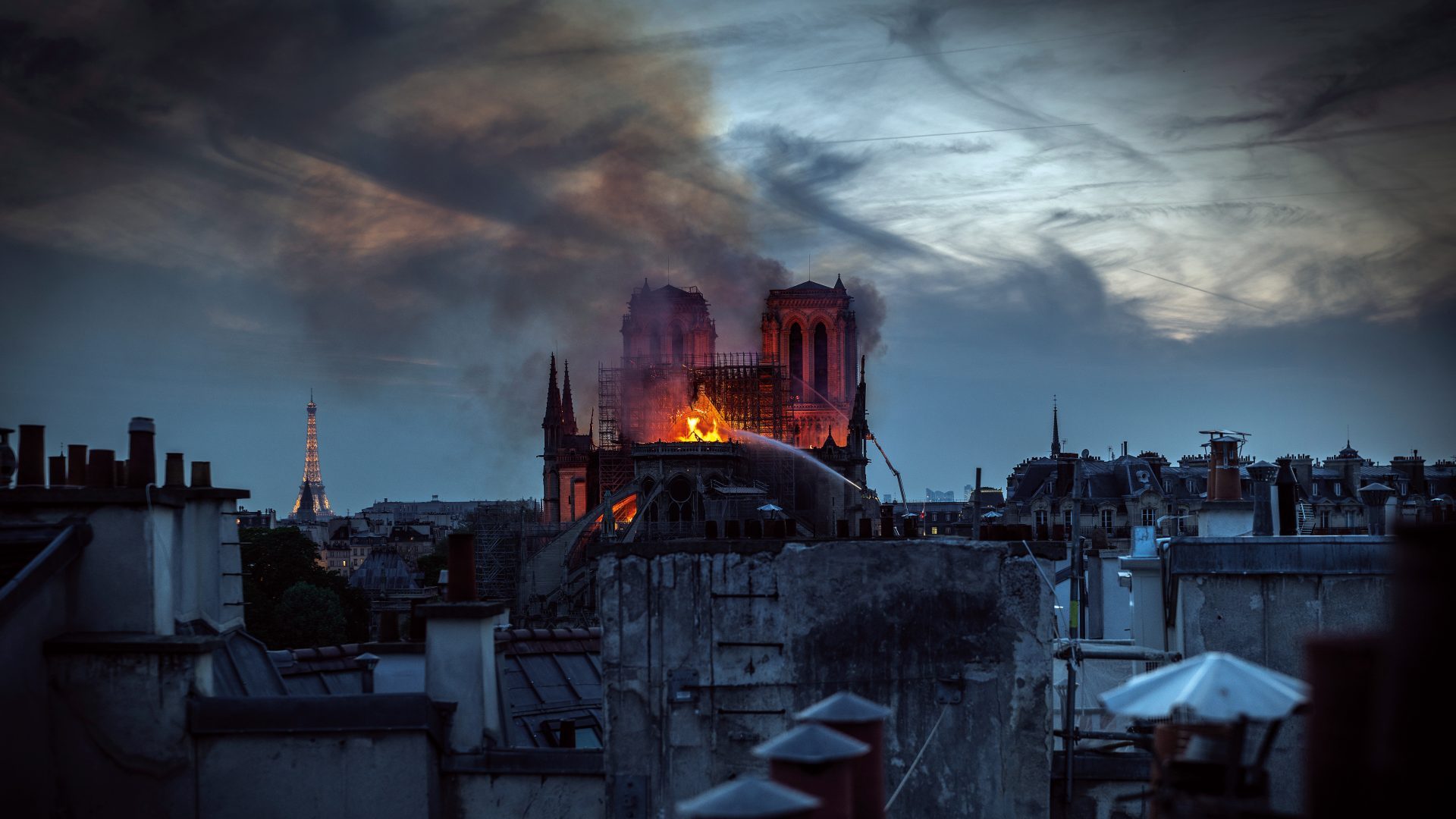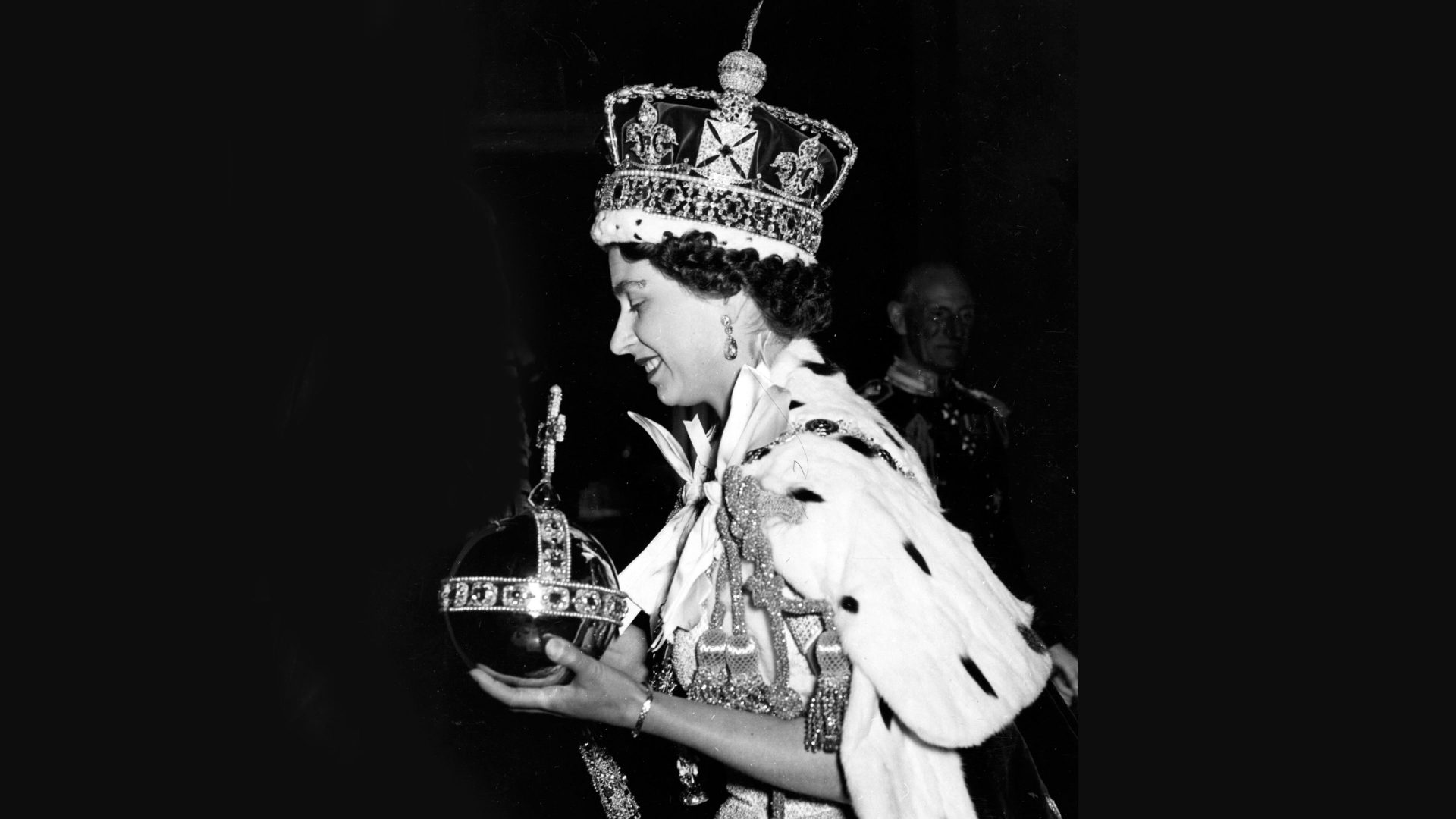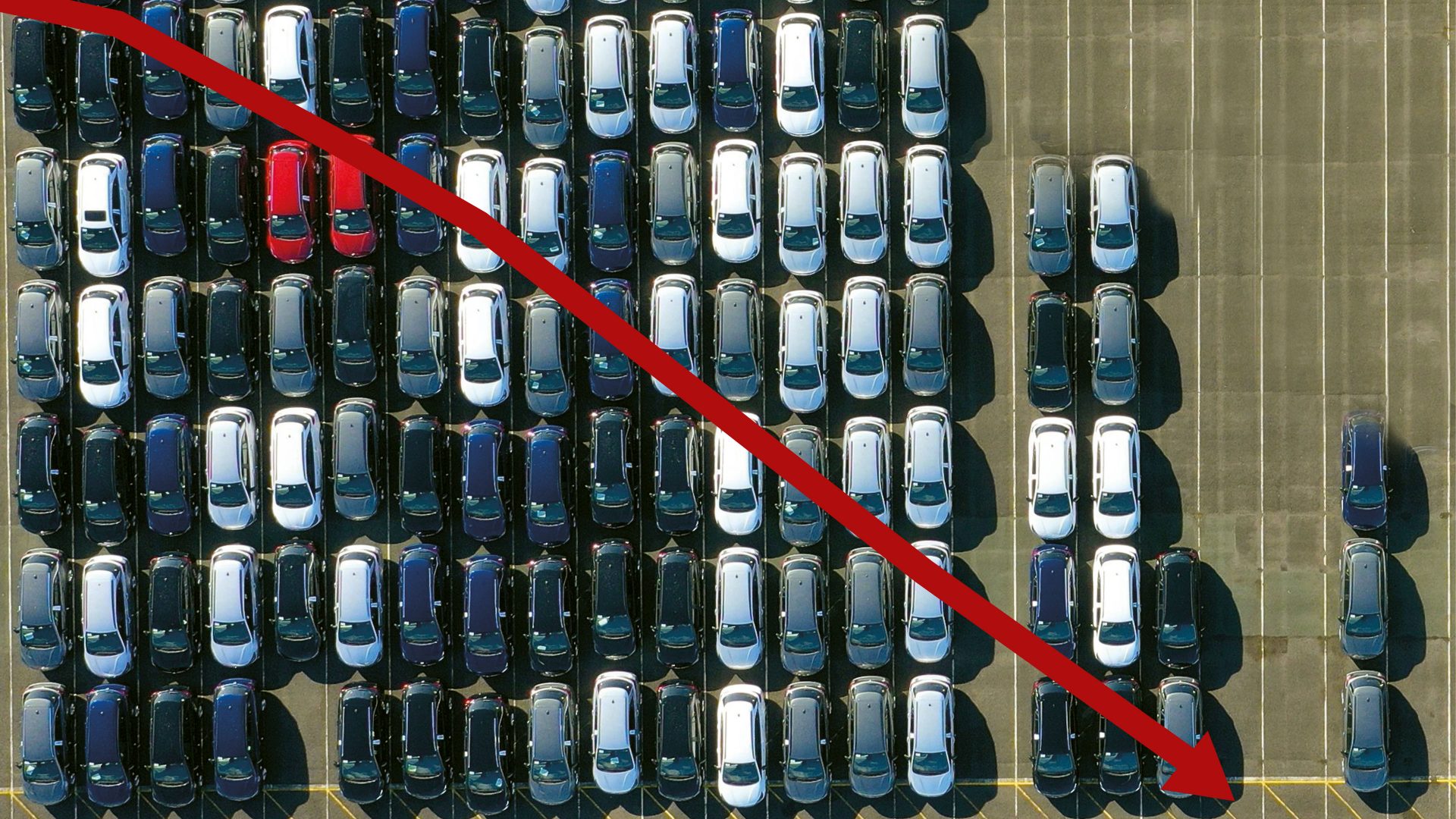The graphic novelist Sandrine Martin was at home in southern Paris on April 15, 2019, when she noticed an enormous plume of black and yellow smoke billowing in the distance. It was around 6.30pm on a clear, crisp spring evening and she didn’t think too much of it until the wail of sirens multiplied and instinct made her turn to the news.
As her phone flickered to life, footage of the cathedral of Notre-Dame engulfed in flames appeared, its spire toppling in slow motion into the void.
The sight unleashed a collective howl of helpless sorrow in the French capital that would quickly reverberate around the world: “We all remember that moment… everyone in Paris cannot ever forget. It was very, very shocking,” Martin said.
She did not know it then, but 14 months later Martin would be one of an elite five French artists invited by Parisian authorities to sketch and document the enormous two-year, €197m (£163m) project to stabilise the devastated cathedral so that reconstruction could begin in earnest. Experts estimate that the final bill to reopen Notre-Dame’s doors – scheduled for completion in 2024 – could top €400m (£332m).
An army of carpenters, abseilers, scaffolders, organ builders, master glassmakers, art restorers, mural painters and crane operators were recruited from all over France and have spent the past two years preparing the site for the rebuilding stage.
Led by a five-star French army general, Jean-Louis Georgelin, salvage teams faced a difficult, first complication because when the fire broke out, the spire was already under restoration and the building covered in high-rise scaffolding. By the time the flames were extinguished the following day, not only had the roof and spire collapsed, but the cathedral was entangled in a web of 30,000 melted metal tubes and scorched wood weighing 300 tonnes, some dangling precariously 300 feet in the air and adding a further, imminent threat to the structure. (Thankfully, the huge copper-clad statues of the Twelve Apostles that flanked the spire had been removed from the roof just four days before.)
Before any work could commence, monitors had to be carefully positioned on to the burned scaffolding to measure the tiniest shifts in the metal and to ensure those working below had enough warning to evacuate in the event of total collapse. A secondary, three-level skeleton of metal beams was then installed to allow teams of specialist abseilers to attach themselves and descend into the heart of the scaffolding.
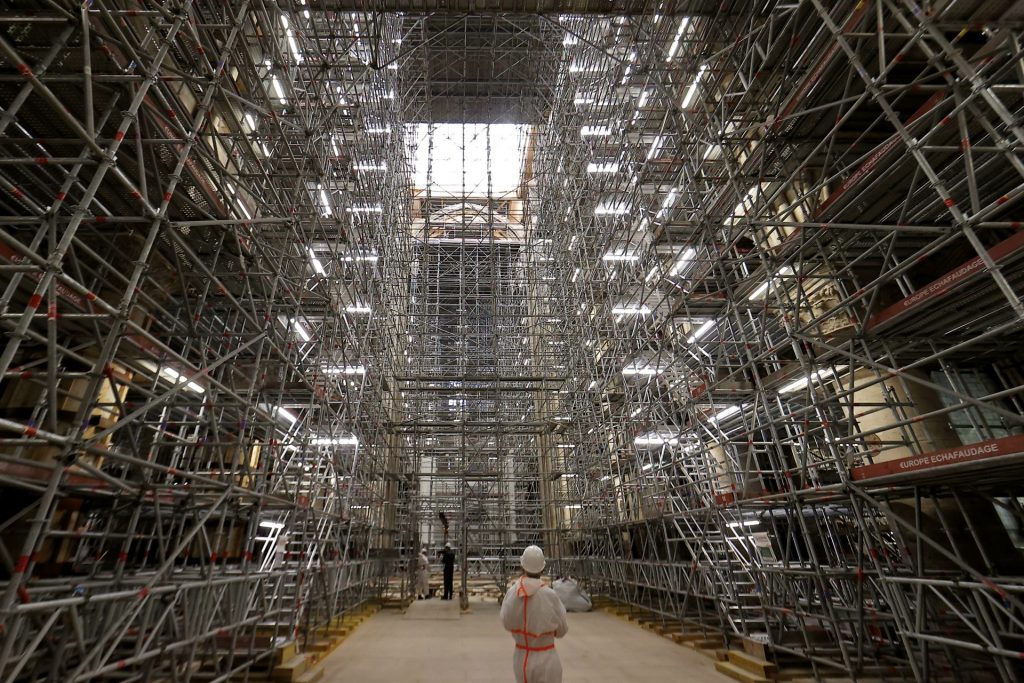
At first, they were forced to work by hand, swinging carefully as close as they could to remove the molten tubes by hand, placing them into baskets suspended between them. This alone took three months. Next, an army of scaffolders moved in, installing a tower crane to extract the rest of the burnt structure, including an enormous wooden beam in the transept, which was also on the brink of collapse.
The crane team worked well into the autumn of the first year, taking advantage of favourable weather when dangerous, high winds were less likely and, as winter approached, installed an enormous, temporary umbrella over the great hole where the roof once was. Sixty custom-built wooden hangars, each weighing more than one tonne and spanning six metres, were then installed into the most weakened bays to shore them up temporarily while rope access teams then finished cleaning the four vaults and removing remaining loose debris. Work was stop-start for a while because of Covid, but by the middle of last year, the grand organ was also dismantled and artefacts including sculptures and paintings that had survived the fire were removed for cleaning and restoration.
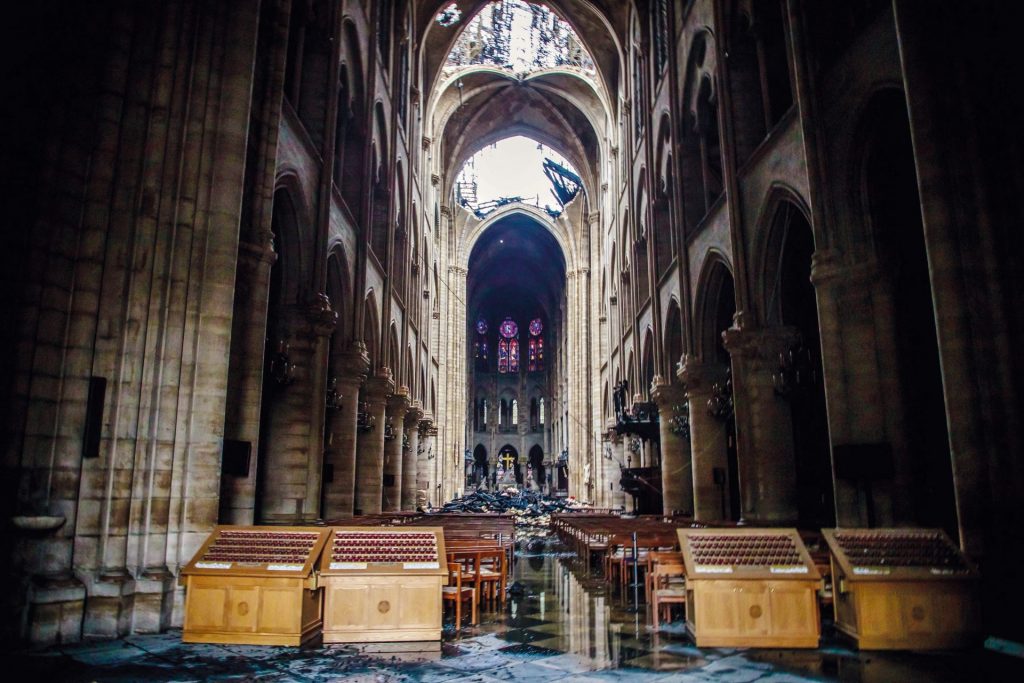
Miraculously, while the modern altar was crushed by falling debris, the 14th-century Virgin of Paris stone sculpture just a few feet away escaped unscathed, and just a few pieces of glass in the monumental stained-glass windows were broken, knocked out by the tip of the falling spire.
Michel Picaud, the president of Friends of Notre-Dame, says that while fundraising for restoration works had begun two years before the fire, the flood of love and financial support in the wake of the catastrophe was unprecedented.
“I was born in Paris and Notre-Dame has always been for me the centre of the city, both from a political standpoint and from a religious one… on the other hand, the outpouring of support made me realise that NotreDame de Paris not only belongs to the French but to the whole world,” he told me. “It’s a symbol of Christianity in its universal sense, going beyond the barriers of citizenship, race, or faith. Notre-Dame de Paris belongs to everybody on this planet.”
As safeguarding work continued at pace, the 1,000 oak trees needed to rebuild the spire, transept and adjacent bays were selected by master craftsmen and harvested before their sap could rise between January and March last year. Half the trees came from public forests, while the other half were donated by owners of private land: sawing operations required 45 mills and only finished in January this year.
General Georgelin observed that eight of the 1,000 oaks had girths larger than one metre, able to produce more than 20 metres of wood each. They were chosen specifically to create spans of a particular curvature for the new cathedral spire: “These eight oaks will form the beams on which the new spire will rest. They will be delivered in the spring to the carpenters who, after a trial assembly in the workshop, will put them together on site in 2023, ready for reopening the following year.”
While walking Notre-Dame’s perimeter, I was struck by the fact that the biggest of these new oaks had been planted just before the French Revolution by royal foresters responsible for ensuring that the navy was kept constantly supplied with fresh ship masts. Notre-Dame’s new oaks may have been cut in 21st-century mills, but a group known as Carpenters Without Borders, experts in medieval woodworking techniques, will hand-finish each one in the ancient ways.
Sandrine Martin says one of the other, less known and yet equally serious complications faced by specialist teams was toxic pollution: hundreds of tonnes of ancient lead in the cathedral’s roof had melted in the heat of the blaze, releasing particles into the air and settling into surrounding areas. Experts believe the heat exceeded 750C, allowing it to sear into the limestone, creating fissures in some stones that are now being sealed. All 8,000 pipes of the grand organ, which has been the cathedral’s “voice” since 1733, were undamaged, but each one had to be decontaminated before it could undergo restoration.
“When we visited, it was fascinating for me because I did not know that before anyone enters, they must take all their clothes off. Everything, underwear, everything, then you must shower and put on special clothes, hats and masks. When you leave, you do the same… it is to protect against lead poisoning or lead coming out of the site,” she told me. (Even the French president had to abide by this stripping protocol).
A further conundrum for French authorities lay with deciding exactly how the Gothic building should be rebuilt. The cathedral, of course, dates to the 12th and 13th centuries, a revolutionary masterpiece of architecture with soaring, thinner walls, huge, pointed arches and windows allowing the interiors to flood with light. Construction began as a replacement for the older and smaller Roman cathedral and expanded into the much larger, iconic Parisian sanctuary that would go on to host myriad historic events including the coronation of Emperor Napoleon in 1804.
The ravages of time, previous fires and the 1789 Revolution meant that by the early 19th century Notre-Dame was in a parlous state and, as extraordinary as it sounds now, serious thought was given to its demolition.
An 11th-hour campaign – helped enormously by Victor Hugo’s hugely popular 1831 novel, The Hunchback of Notre Dame – ignited the French public’s imagination and in 1842, authorities read the room and changed tack, appointing Eugène Viollet-le-Duc, a brilliant young architect (and thinker) to lead what would become a 20-year rebuilding project.
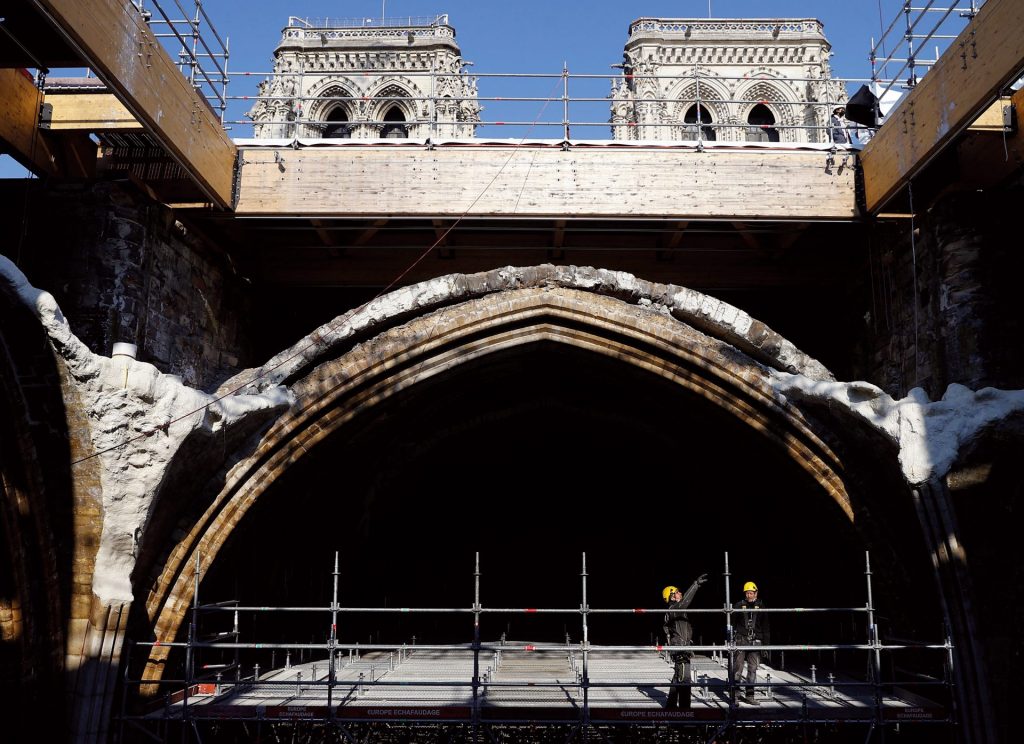
The product of two generations of illustrious architects, Viollet-le-Duc was unusual in that he had travelled extensively throughout Europe, studying medieval architecture in situ. However, he chose to continue his education with building teams rather than in university lectures, restoring a variety of French Gothic buildings. The rebuilding of Notre-Dame was challenging even then because Viollet-le-Duc was also forced to choose between different time periods for his reconstruction. The façade, for example, had been built in the 12th century but had undergone a dramatic reconfiguration in the 13th century, including the addition of the instantly recognisable flying buttresses, while the interiors had been remodelled in the 1700s.
Which Notre-Dame to choose?
In the end, he favoured the “rayonnant” or height of Gothic style of the 13th century over the original, Roman style while also cherry-picking a few aspects he particularly liked such as the earlier, 12th-century rose windows.
One of Viollet-le-Duc’s most extraordinary achievements, however, was his decision to commission replicas of scores of missing medieval sculptures after researching and sketching hundreds that he had seen in engravings or in other Gothic cathedrals. His sculptors were given detailed instructions and he apparently followed their work closely: the copper statue of Saint Thomas, the apostle on the cathedral roof, bears his features.
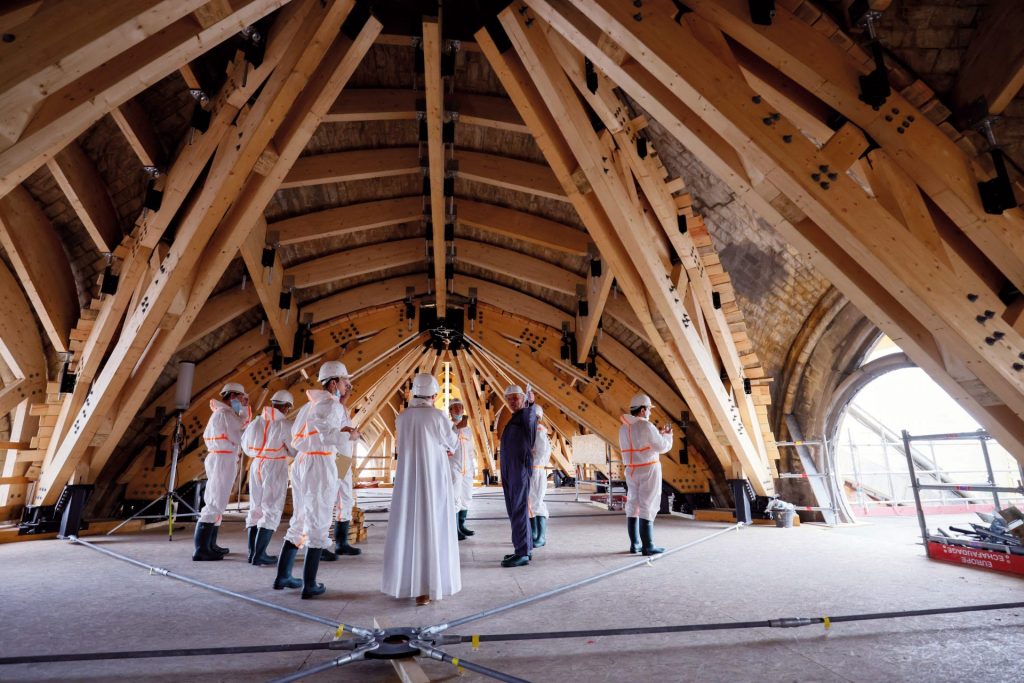
President Emmanuel Macron and French historic monument authorities also took their time to decide exactly how to restore Notre-Dame. Originally, Macron tried to encourage debate about building something entirely new, suggesting architects consider a “contemporary gesture”. Some also argued that rebuilding the roof in wood made no sense after it was lost to fire and that modern materials needed to be considered, but the spate of wild design ideas that emerged – among them a greenhouse or an open-air swimming pool – polarised the French. Last year, the French government confirmed that medieval materials and building techniques would be used to rebuild the roof and spire – and all would be based on the designs of Viollet-le-Duc.
Philippe Villeneuve, who has led restoration works at Notre-Dame since 2013 – and sports a tattoo of the spire on his left arm – is leading a team of three architects who are now hard at work supervising plans to return the cathedral to “its last known state”.
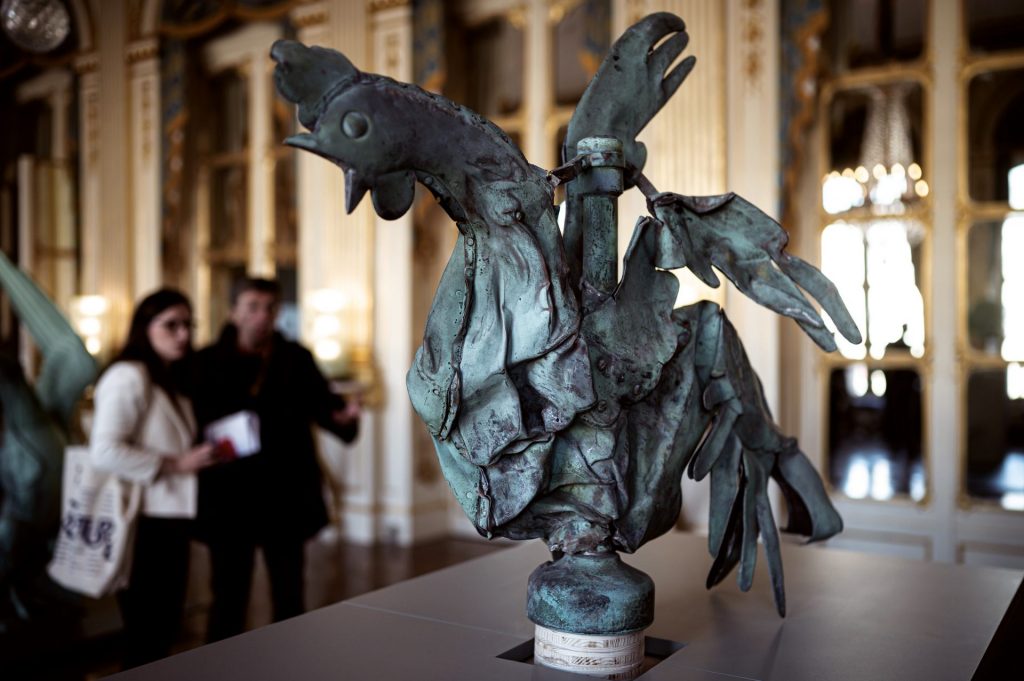
Every day, however, seems to bring with it a new puzzle; the most recent when archaeological teams unearthed an ancient lead sarcophagus. A small camera sent inside revealed the upper part of a skeleton, cloth remains, hair and a plant “crown”, suggesting it belonged to a dignitary and is likely to date back to the 14th century.
When the cathedral does finally reopen its doors in two years’ time, visitors will discover a revamped interior space, softer lighting, a more clear and curated directional system, and possibly carefully chosen contemporary artworks paired with its Old Masters collection. Patrick Chauvet, Notre-Dame’s rector, is keen to foster dialogue between old and new despite opposition from more than 100 cultural figures who recently wrote a letter to Le Figaro complaining that it would go against the vision of Viollet-le-Duc and “Disneyfy” the historic landmark.
Sandrine Martin, whose drawings adorn the hoardings surrounding the work site and will be familiar to Parisians and tourists alike, insists that one of the most exciting aspects of seeing the restoration up close was discovering the remnants of colour and design reintroduced by the 19th-century architect.
She says it has been little known that Viollet-le-Duc commissioned painting of bright murals in all 24 side chapels, work that was scraped back to bare stone in the 1970s. “In the middle ages, you think it must have all been white and sculptural but no, it was all painted in bright colours, everything, even the façade was painted. Before, everything was dirty from the smoke of candles for so many years. Now, it will be a shock for people to see it all clean and renewed,” she told me.
“It’s a fantastic opportunity to rediscover this patrimony, this richness of paintings and walls and sculptures, the brilliance of the decorations painted by Viollet-le Duc. I used all his palette of colours, the yellows, the reds and blues, in my drawings … it is really nice to be able to show and explain it to people while they wait for Notre-Dame to return.”
Paola Totaro is a former president of the Foreign Press Association in London. She has written for The New York Times, Guardian, Independent, Sydney Morning Herald and The Australian
To donate to the ongoing project, click here.

